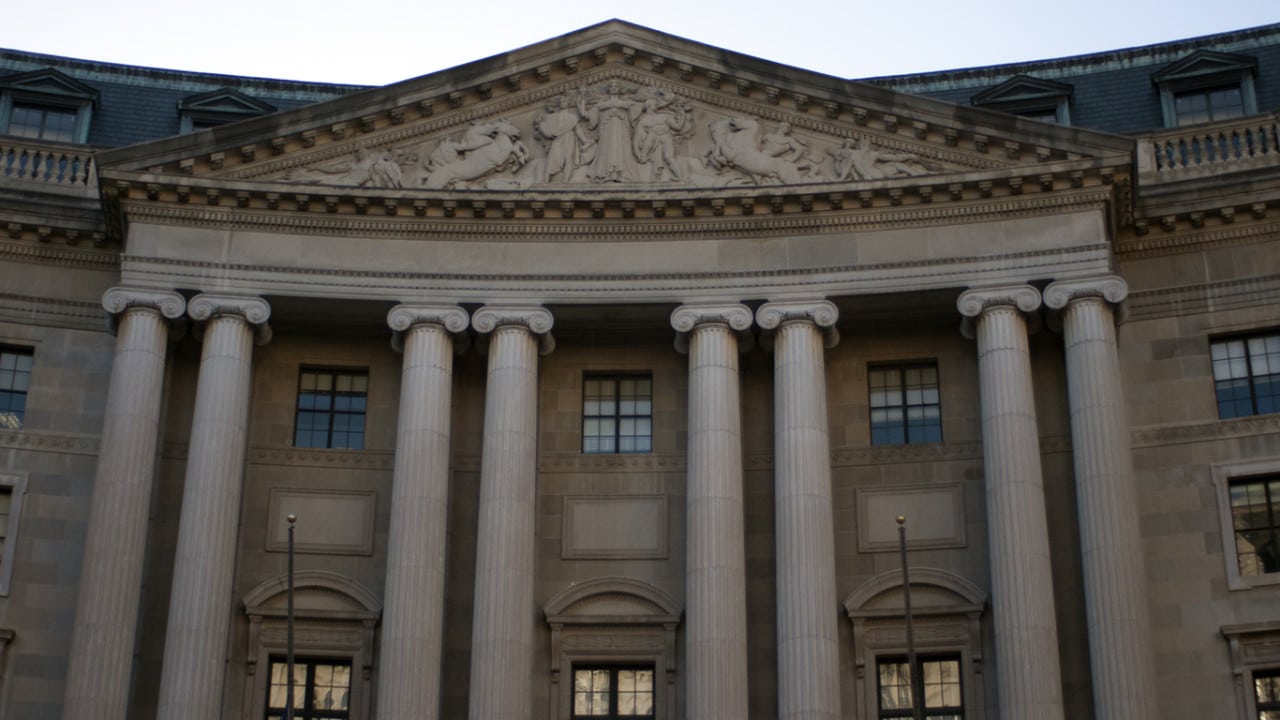
The Environmental Protection Agency defended its authority to regulate carbon emissions from coal-fired power plants Monday in a briefing filed with a federal appeals court, calling for the rule to be upheld.
The March 28 deadline falls into an expedited schedule set by the U.S. Court of Appeals for the District of Columbia Circuit for the massive legal challenge to the regulation.
An immense group of 156 petitioners comprised of states, utilities, fossil fuel companies, and trade and interest groups are fighting to have to rule overturned. They argue that the rule, which requires states to develop action plans to meet EPA-set carbon emissions reduction targets, represents a massive regulatory overreach by the agency.
EPA responded to petitioners’ arguments in its brief, stating “The Clean Air Act … provides the Environmental Protection Agency … well-established authority to abate threats to public health and welfare by limiting the amount of air pollution that power plants pump into the atmosphere.”
The petitioners in the case made several arguments in their brief, filed in late February, including that EPA should not have included “outside the fence line” measures in determining its best system of emissions reduction (BSER), the recommended, but not mandated, course of action to reach the emissions reduction goal. According to the petitioners, the agency should only have considered actions that could be taken at individual sources to reduce emissions.
“Under their view, even though states will likely facilitate cost-effective generation-shifting in their plans and sources will likely rely on generation-shifting to meet state standards, EPA cannot consider these same measures for purposes of setting the targets states must meet. Nothing in the text of the [Clean Air] Act compels this counterintuitive outcome,” EPA retorted.
Petitioners also asserted that the EPA is unlawfully taking control of states’ energy mixes, presenting a constitutional issue. The agency dismissed this argument, stating “the Rule is an exercise in cooperative federalism akin to numerous other court-approved regulatory programs, and it neither unlawfully coerces nor commandeers states given that states may opt to do nothing, in which case EPA will regulate sources directly.”
Perhaps the most commonly cited argument against the rule is that it shouldn’t have been penned at all, as the Clean Air Act states that a source regulated under Section 112 – as coal-fired power plants are – cannot be regulated under Section 111(d), the section under which the Clean Power Plan was drafted.
EPA argues, however, that that portion of the Clean Air Act is ambiguous due to a clerical error. “Petitioners’ argument that the text of Section 111(d) bars EPA from regulating power plants’ CO2 emissions because power plants’ emissions of other pollutants are regulated under Section 112 also fails. Section 111(d) is ambiguous, and EPA reasonably resolved those ambiguities—and avoided creating an unnecessary conflict in enacted statutory text—by concluding that Congress did not intend to bar regulation of different pollutants under different programs,” according to the brief.
More briefs are due to roll in this week, with EPA’s intervenors scheduled to submit by the week’s end. Petitioners and their intervenors will have a chance to respond to the EPA brief in mid-April and final briefs are due April 22. Oral arguments begin June 2.
From there the path forward is a bit murky. Any decision by the appeals court is nearly certain to be appealed to the Supreme Court, though recent events means it’s anybody’s guess what will transpire at that level.
EPA got a shock in early February when, in a remarkably unusual move, the Supreme Court approved a stay of the rule, halting its implementation pending judicial review. The 5-4 Supreme Court vote signaled that among the justices there existed significant doubt to the legality of the rule.
Just two days later, conservative Justice Antonin Scalia died unexpectedly, leaving the rule’s fate in the inevitable Supreme Court ruling even more uncertain.
Replacing Scalia has been a point of contention between the administration and the Republican-led Congress, with many GOP lawmakers asserting the seat should not be filled until the next president takes office in 2017.
The dispute could result in three conclusions. If President Barack Obama can push nominee Merrick Garland through, or if the next president is a Democrat, the next Supreme Court justice is likely to vote in favor the Clean Power Plan.
However, if Garland’s nomination is blocked and the next president is a Republican, the new justice is likely to be right-leaning, and the EPA would have a more difficult battle getting a favorable decision from the high court.
Finally, if the seat remains vacant and the Supreme Court case results in a 4-4 tie, the rule would revert to the decision of the D.C. Circuit Court of the Appeals. This could be good news for the EPA as the three-judge panel hearing the case in June consists of two judges appointed by Democrats and one appointed by a Republican. The court also denied a request for stay prior to the Supreme Court decision that granted the hold.